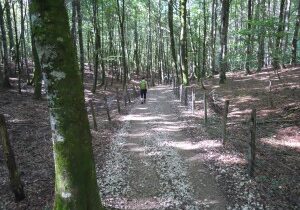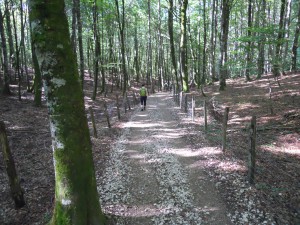Wine, Place, and Pilgrimage
I spent the last three weeks of September in Northern Spain, walking sections of the Camino de Santiago and drinking Spanish wine. Spain, like France, has instituted a form of appellation controlée. This means that in order to put Rioja on a bottle, for example, the wine must come from the Rioja region. The philosophy behind the appellation controlée is the concept of terroir: the idea that places give unique characteristics to wine. Roger Scruton, in his book “I Drink therefore I am” explains:
From the moment of my fall, I was a terroiriste, for whom the principal ingredient in any bottle is the soil. By ‘soil’ I do not mean only the physical mix of limestone, topsoil, and humus. I mean the soil as Jean Giono, Giovanni Verga, or D.H. Lawrence would describe it: nurse of passions, stage of dramas, and habitat of local gods… There in the glass was the soil of a place, and in that soil was a soul.” (12,13)
Soil, as I have come to know since marrying an Agrologist, is important. Soil varietals, drainage, bedrock depth, organic material, and horizon sequencing change a place like little else can. It determines our diet, scenery, architecture, and even lifestyle. But for the terroiriste, soil is more than any one physical characteristic. Here, soil is like allegory: a visible, corporeal access to the invisible, the spiritual.
Scruton holds that places gain their meaning from “poetry, history, the calendar of saints, the suffering of martyrs (12).” Pilgrimage is predicated on a similar idea: a particular place has an essence to it that cannot be encountered anywhere else. Most people I met on the Camino viewed pilgrimage as a personal, spiritual journey. It is about taking the time to think about who you are as a person. The destination? An excuse to be out on the road. Historically, an important element of pilgrimage was penance—the outward expression of inner reflection and repentance. In that way, the journey itself was important. But the destination was more important. The place to which pilgrims travelled was intrinsically more spiritual. Seeing or touching the bones of the saint buried at Santiago brought healing and made people holy. The place mattered, and the ground (the soil) was holy.
Ancient Romans believed in spirits that governed over and protected particular places. Such a spirit was called a genius loci. In many parts of the Christian world, this idea transferred to local saints. The term is still commonly used today to mean the ‘spirit of the place’ in an existential sense. These days, the significance of place belongs to the realm of phenomenology. The focus is on the human experience, and this is of particular importance to architects and developers who seek to create different genii loci with what they build. The objective reality of place, of the soul or essence of a place, is not discussed. The objective reality of place, if it exists, does not seem to be of much importance.
The phenomena of place is a popular topic. But what about the noumena of place, if you will? Do places have an essence to them, a unique, objective reality? It cannot be denied that people feel the importance of place in the context of wine, pilgrimage, or soil. I have often heard people who have lost their land (usually farmers or refugees) talk about leaving their land as losing a part of them; it is an amputation. Roger Scruton says that “Wine offers a glimpse of the world sub specie aeternitatis (34)” But I’m not sure I agree. Sub specie aeternitatis refers to that which is eternally true. But place cannot have an eternally true essence, because it is changed and developed by the people who work it, by the different saints, miracles, and martyrs. If places have souls, as it were, then those essences must be more similar to a human soul than to a Platonic Form: they must be open to change, to development, and to human experience.
Philosophy alone cannot tell us whether the soul of a place is a human construct or an objective reality of place, a true soul. But perhaps with a good pair of hiking boots, a wine glass, and a corkscrew, we can make our own steps towards the answer.
Robyn
Latest posts by Robyn (see all)
- I’m A Man But I Can Change? Human Nature and Human Enhancement - December 12, 2016
- The Nicene Creed: “…to judge the quick and the dead…” - July 4, 2016
- Can Hermeneutics be Ethical? Ricoeur and the War - June 7, 2016


